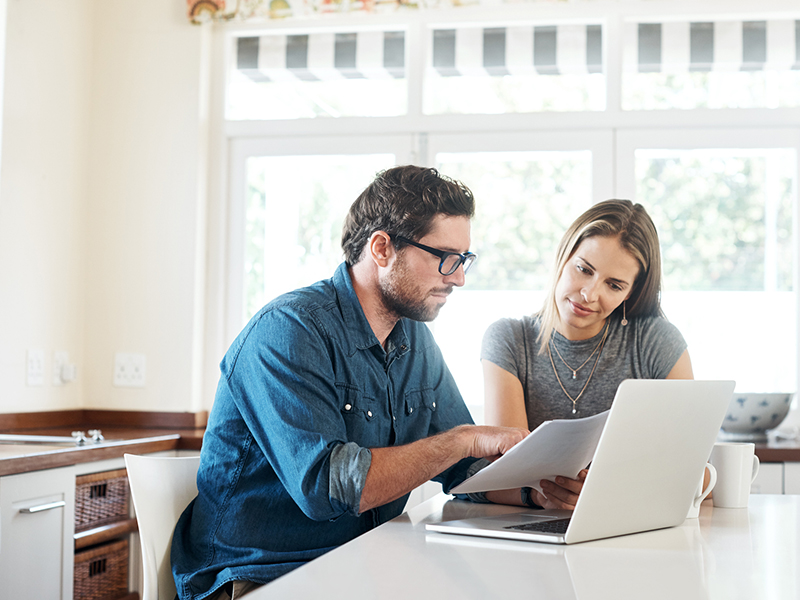With its Mediterranean weather and proximity to the ocean, there’s a sundrenched paradise vibe to living in the Pacific Palisades. But living costs here can easily go up when unmanaged, especially when temperatures rise.
Continue reading to learn more about the cost of living in the Pacific Palisades and how you can reduce your utility bills –and even your carbon footprint– in the process.
HOW MUCH DOES IT COST TO LIVE IN THE PACIFIC PALISADES?The cost of living in the Pacific Palisades is 44.1% higher than the national average and higher than most parts of California. According to an energy report, the Pacific Palisades residents pay approximately $236 per month on electricity alone. That comes around to a total of $2,832 a year –– about 1% higher than the national average of $2,811. Electric bills are forecasted to go even higher as estimates reveal an increase of between 32% to 50%. |
Table of Contents:
ENERGY-SAVING TIPS
The best way to counteract the rising Pacific Palisades cost of living is to identify probable energy-wasting issues in the home and address these matters immediately. These tried and tested tips from local real estate experts show residents how to save on their electric bill by reducing their property’s energy consumption.
-
Get a solar panel system for your home
Installing a solar panel system in your property can effectively collect renewable power from sunlight and convert it into electricity. This can be used to provide a part of, if not the entire amount of energy needed in a house.
Mostly placed on the roof of a house, the system is made of photovoltaic panels that convert sunlight into electric currents that go into a solar converter. The energy generated is used to power the home, which gives the following benefits to the homeowner:
- Reduced energy bill
- Lessened reliance on electricity from the grid
- Insurance against rising power costs
- Steady supply of renewable energy source
- Low maintenance cost of the system
Homeowners should keep in mind that having solar panels installed is not a one-stop service that applies to all properties. Each home has unique characteristics, so solar panel installations will be customized to the available roof space and the requirements of a household. The entire process of going solar can also take two to six months to finish. Those who switch to solar can expect investment returns from free electricity in about 10 years.
-
Invest in energy-efficient appliances
One of the most underrated ways to save money on bills is by shifting to energy-efficient appliances. Energy-efficient appliances basically perform the same tasks as the less efficient, regular counterparts, just with less energy usage. Replacing older appliances can also lower utility bills and bring an elevated level of convenience to the home. It would be best to look for high-efficiency appliances with a label that indicates compliance to strict energy guidelines set by governing bodies.
There are all kinds of energy-efficient appliances available on the market today, such as:
- Air conditioners and heaters
- Dishwashers
- Lighting
- Ovens and stoves
- Refrigerators
- Washing machines
- Water heaters
Aside from energy-efficient appliances, homeowners can also turn to smart devices to decrease energy expenses by 15% or more. One of the most popular smart devices used in homes across the country are smart thermostats. By intelligently managing heating and cooling, smart thermostats help bring down energy costs. These devices can learn the preferences of homeowners and adjust the temperature according to their habits. Homeowners can also control smart thermostats using their smartphones.
Standby power consumption, also known as vampire or phantom load, accounts for 5% to 10% of electricity use in a household. Cable boxes, gaming consoles, computer monitors, and televisions are just some appliances that waste electricity while being plugged in on standby mode. To prevent standby power consumption, use smart power strips. Smart power strips can handle multiple electronic devices and detect when these devices are not in use. Some smart power strips even have remote control or timer features to also power down devices.
-
Seal windows and doors to prevent heat loss
Weatherstripping is the method of sealing small openings in the home– such as doors and windows– with the use of sealants or rubber materials. This exchange forces the cooling or heating systems of the home to compensate and increases their workload. Sealing air leaks decreases total air infiltration by around 25%, effectively reducing consumption and improving the home’s energy efficiency.

-
Energy scheduling
Timing electric usage is one of the top energy efficiency tips that experts recommend. Determining when to do certain household chores and maximize usage of appliances can help shave consumptions during peak hours when the price of energy is at its highest.
During the hot season, for instance, the increased consumption can place additional stress on the overall grid. This, in turn, leads to costs being passed on to customers. Identifying the time period when energy costs the most, like between 4 to 9 PM, is a good strategy to lower electricity bills.
Using appliances like the dishwasher, electric stove or oven, and washing machine during peak hours can also add around $30 to $50 to monthly costs. Homeowners should put off doing the laundry or running the dishwasher until after the peak hours. Those who have electric vehicles should put off charging until after 9 PM.
WATER CONSERVATION
Water conservation is another crucial factor in keeping Pacific Palisades cost of living under control. Aside from discovering energy efficiency tips, having water-saving fixtures and strategies at home is a big help to maintaining a positive household budget.
-
Install low-flow showerheads and faucets
Showers and faucets consume about 19% of a person’s total use of water, both making up the second largest use of water at 11.1 gallons per capita daily. Changing the way these fixtures are used– or shifting to efficient fixtures– can greatly impact how much water a household uses. The good news is that bathrooms and kitchens are among the easiest places to save on water.
There is an age-old wisdom to the advice of taking shorter showers to decrease water bills. According to a report from the Alliance of Water Efficiency, an individual showers for at least 7.8 minutes and uses up to 15.8 gallons at an average flow rate of 2.1 gallons per minute. Today’s modern bathroom installations take this tip further by allowing homeowners to enjoy their showers at a fraction of the water used. By shifting to efficient showerheads, residents can have a satisfying shower while using no more than 2 gallons per minute.
For faucets, shifting to products that have earned the efficient WaterSense label is the best way to reduce water consumption. Efficient faucets and accessories like faucet aerators can decrease a sink’s water flow by 30% or more. Another practical practice is to simply turn off the faucet between brushing teeth or washing the dishes.
Aside from showerheads and faucets, installing efficient residential toilets can also go a long way in conserving water. Research shows that there are millions of non-efficient residential toilet fixtures in California and replacing these can save up to 400 million gallons per day. A high-efficiency toilet (HET) has around a maximum flush volume of 1.28 to as low as 0.8 gallons per flush. With an average of 5 flushes a day per person in the home, shifting to a high-efficiency toilet translates to better savings.
-
Fix leaks promptly
A recent study indicates that leaks in a typical home can accumulate to more than 10,000 gallons of wasted water each year. Homeowners should check faucets, hoses, showerheads, and toilets for any signs of leak regularly. Aside from obvious dripping, a wise method to determine leaks is to check the water meter before and after a period of two hours when water is not being used in the home. Eliminating household leaks can easily save residents around 10% on their water expenses.
-
Use drought-resistant landscaping
Due to Southern California’s climate, drought is a natural occurrence. Aside from having the benefit of a stunning garden in the Pacific Palisades, drought-tolerant landscaping can also help save money on bills. Homeowners can lessen water consumption without sacrificing outdoor space by choosing plants that require little water, such as succulents and cacti. Other drought-tolerant plants that are native to California include varieties of lilies and lavender.
UTILITY BILLS MANAGEMENT
For residents who want to lessen their total cost of living in the Pacific Palisades, overseeing and controlling utility bills should be a way of life. These strategies can be used by homeowners to identify their own utility needs, have a deeper understanding of utility providers, calculate expenses and potential savings, and plan efficiency measures for the home.
-
Review and compare utility providers
Homeowners can get in touch with local providers and visit their official websites to collect information. Local forums, community groups, ratings, and customer feedback are also great sources for actual resident experiences.
While there are primary utility providers for electricity, water, and gas in Pacific Palisades, homeowners can still check for rebates, incentives, or discounts that can help save money on bills. This practice also enables homeowners to be more aware of new offerings or plans from providers to maximize cost-effective consumption.

-
Monitor and manage usage through utility apps
Nowadays, there are energy-tracking apps that can be downloaded on Google Play or App Store to help homeowners monitor their consumption and manage usage. Aside from real-time monitoring of utilities, integrated management of multiple utilities like electricity, water, and gas is also possible with some apps. Some examples of these utility apps are:
- Emporia Energy: This app allows monitoring and comparison of electric usage and offers time-of-use management tools. Emporia Energy can only be used by those who have Emporia’s smart home energy products.
- Meter Readings: This versatile app is a favorite among homeowners who want to keep track of all their utilities. Meter Readings can monitor up to five meters, which can include green energy sources, electricity, and water. It can also compile an energy usage data report.
- Nest Mobile: Those who own a Nest thermostat can take advantage of this app to monitor and adjust their home temperature, even when they are not at home. The Nest Mobile app also provides camera footage, energy consumption reports. notifications about extreme temperatures, and smoke and carbon monoxide alerts.
HOME MAINTENANCE
Lowering utility bills does not have to entail a lot of effort, time, or money. Sometimes even the smallest or simplest of adjustments in home maintenance enables Pacific Palisades residents to save money on bills. Below are some practical and easy things to do that can lead to decreased monthly utility spending:
-
Regular HVAC maintenance
Schedule a regular replacement of HVAC air filters to prevent debris from impeding its regular function. Dust, dirt, and other debris get trapped in the air filter and reduce the efficiency of the HVAC system. Simply changing air filters can decrease the energy consumption of an HVAC unit by 5% to 15%.
Homeowners should also check other components of the AC such as the evaporator coils, coil fins, and condensate drains. While homeowners can clean some of these components with caution or keep the immediate space surrounding it clean and free from debris, it is best to consult HVAC professionals for proper maintenance.
HVAC professionals can perform preventive maintenance to avoid sudden heating and cooling failures that can spike energy usage. They can also calibrate thermostats and other HVAC components to ensure peak efficiency. If there are any issues that are causing energy loss, HVAC professionals can quickly pinpoint and address the root of the problem.
-
Insulate your home properly
A properly insulated home can provide comfort in any season while significantly reducing energy bills. According to the EPA, home insulation can help save an average of 15% on cooling and heating expenses or about an average of 11% on total energy spending.
Adding insulation in attics, basement walls, and floors over basements and crawl spaces not only reduces costs, but can also provide long-term savings through reduced maintenance costs and protection of the home’s structural components.
-
Opt for LED lighting
Light-emitting diode or LED lighting is among the top energy-efficient features that can be incorporated easily into any home. This continuously developing light technology can produce light 90% more efficiently compared to incandescent bulbs, but uses significantly less electricity. LED light bulbs produce comparable or even better lighting than other bulbs. They are also known for being more durable and long-lasting than other lighting types.
LIVE YOUR BEST LIFE IN THE PACIFIC PALISADES
With more than 35 years of real estate experience, James Respondek has a proven track record, which includes selling hundreds of properties and closing over $1 billion in real estate transactions. With his in-depth knowledge of South California’s most exclusive communities, James can definitely guide individuals and families in finding the perfect energy-efficient homes in Pacific Palisades.
Get in touch with James Respondek today by calling 310.488.4400 or sending him a message here.



